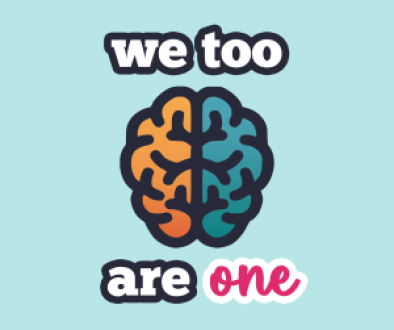Social expectations in a neurodiverse relationship
One of the key questions about neurodivergence I hear in the couples space is, “Can neurodivergent people be social?” The answer is, yes. However, the way NDs socialise, and the energy it takes, can look very different from neurotypical social expectations.
Some of the ND partners I work with love deep, one-to-one conversations or “birds of a feather” friendships with others who share their way of seeing the world. Others enjoy group settings but find themselves masking to get through them, which can lead to exhaustion later.
In relationships, especially ND–NT couples, these differences can create tension. The neurotypical partner may enjoy spontaneous outings with friends, while the neurodivergent partner feels safest and happiest when socialising is structured, familiar, and predictable.
This means couples have to navigate different expectations and be mindful of the impact that social norms can have on neurodivergent people. The real question isn’t whether ND people can be social, but how we can manage social expectations in a way that protects both partners’ wellbeing and makes space for connection and fun.
Understanding differing social needs in an ND-NT couple
In any relationship, social needs can differ greatly, especially when one partner is neurotypical and the other is neurodivergent. These differences shape how each partner experiences time with friends, family, and the wider community.
Neurodivergent people may have a lower threshold for social stimulation and require more recovery time after events. It’s important to remember that every neurodivergent person is different . So this might manifest in an outwardly rather extroverted ADHD or AS individual. However, what’s going on inside can be very different to what they present, especially if they are masking. They can get a social hangover, where the mind and body desperately need a break from interaction.
Add masking fatigue (the effort of consciously monitoring and adjusting behaviour to fit neurotypical norms) and the toll can be significant. While an NT may thrive in spontaneous group gatherings, the ND partner might prefer structured settings with time to mentally prepare, one-to-one interactions, or familiar environments. These are differences, not flaws.
The value of friendships and social connections for both partners
Friendship is undoubtedly linked to mental and physical health. From the neurodiverse community, I often hear of the “birds of a feather flock together” phenomenon. This is where neurodivergent people seem to naturally gravitate toward each other, even if the friend they are drawn to isn’t diagnosed at the time.
Neurodivergent friendships often flourish because of shared communication styles, sensory preferences, or mutual understanding. Always keep in mind the diversity in neurodiversity – indeed, many ND traits can clash with each other – but often, simply feeling free to drop the mask can make a friendship much more comfortable.
For couples, social connection can also be a source of resilience. It provides emotional support beyond the relationship. This being said, what counts as healthy socialising varies. Some may need a weekly night with their friends, whereas others feel nourished by just one deep conversation per month.
It’s beneficial to discuss this as a couple. What does a balanced social life look like for each of you? How can you integrate both preferences without overextending each person?
Social barriers for the neurodivergent partner
ND individuals may face barriers such as:
- Sensory overload in crowded or noisy venues
- Misread boundaries or subtle cues being missed or misinterpreted
- Exhaustion from prolonged small talk or fast-changing group dynamics
These are not necessarily signs of unwillingness from your ND partner. They’re differences in processes and pacing. The most resilient relationships make space for these differences. The NT person doesn’t need to take on the role of the rescuer, but they can stand alongside their partner and help to create conditions where connection is possible without feeling exhausted or unsafe.
The NT partner can help by:
- Choosing quieter, ND-friendly spaces
- Agreeing on time-limited events
- Using text or agreed non-verbal signals to indicate overwhelm
- Using supportive pacing really helps. Build in decompression time after social events so that the ND partner can recover without guilt.
Building a social life in your relationship
A breakthrough I often see with ND partners is realising the couple doesn’t always need to meet neurotypical expectations in order to have a thriving social life. Instead, they can curate. A big, noisy party might be an unrealistic plan and can end in disaster, but a small dinner can feel very welcoming.
You don’t have to copy neurotypical couple social patterns. Instead, build something that genuinely fits.
Ideas include:
- Hosting ND-friendly gatherings with low sensory input, short durations, and clear structure
- Joining shared-interest groups such as book clubs, creative workshops, or volunteer projects
- Setting joint boundaries like “no last-minute plans” or “only one social outing per weekend”
A note for the NT partners – this doesn’t mean you have to do more of the heavy lifting. For more tips on creating an equitable neurodiverse relationship, see coping strategies for neurotypical people in ND relationships.
Tips for open communication about social difficulties
Without regular check-ins, differences can become resentments — one partner may feel overstimulated, while the other feels isolated.
Open communication is key. Try:
- “I love seeing your friends with you, but I need time to recharge after.”
- “It’s important for me to feel socially connected — can we find a way that works for both of us?”
Social differences don’t necessarily cause problems. Silence about those differences can cause a build-up of resentment. If you’re feeling overstimulated, isolated, resentful, or left out, that’s the time to lean in and name it before it hardens into conflict.
By sharing your experiences, you can build a shared language for navigating a world that often assumes there’s only one “right” way to socialise.



